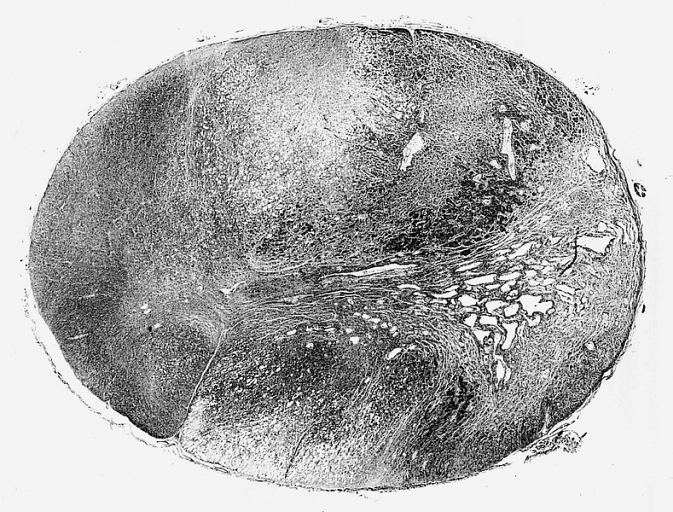 | ||
The concept of grading of the tumors of the central nervous system, agreeing for such the regulation of the "progressiveness" of these neoplasias (from benign and localized tumors to malignant and infiltrating tumors), dates back to 1926 and was introduced by P. Bailey and H. Cushing, in the elaboration of what turned out the first systematic classification of gliomas.
In the following, the grading systems present in the current literature are introduced. Then, through a table, the more relevant are compared.
Contents
ICD-O scale
The first edition of the International Classification of Diseases (ICD) dates back to 1893. The current review (ICD-10) dates back to 1994, came into use in the U.S. in 2015, and is revised yearly, being very comprehensive.
In 1976 the World Health Organization (WHO) publishes the first edition of the International Classification of Diseases for Oncology (ICD-O), now at the third edition (ICD-O-3, 2000).
In this last edition, the Arabic numeral after the character "/" indicates the "behavior" of the neoplasia, with the following meaning:
For the concepts of benign and malignant neoplasia see Tumor and Cancer. For primary and secondary neoplasias see Metastasis.
A brain tumor composed of benign cells, but located in a vital area (as the brain is), can be considered to be life-threatening — although the tumor and its cells would not be classified as malignant.
Kernohan grading
The Kernohan grading system defines progressive malignancy of astrocytomas as follows:
St Anne-Mayo grading
The St Anne-Mayo grading system also is used to grade astrocytomas; however, this system uses four morphologic criteria to assign a grade:
a) nuclear atypia,
b) mitosis,
c) endothelial proliferation-'piled-up' endothelial cells. NOT hypervascularity
d) necrosis.
The St. Anne-Mayo grade has four categories of tumors:
WHO grading
The World Health Organization (WHO) grading system is contained in the volume Histological Typing of Tumours of the Central Nervous System, whose first edition dates back to 1979, the second to 1993 and last one to 2007. The WHO grade has four categories of tumors:
From the histological point of view the WHO system is based on the same criteria as the St Anne-Mayo system.
Comparison of the grading systems
In the following table the various grading systems are compared (the IDC-O scale is not comprised because it is not considered a real grading system):
